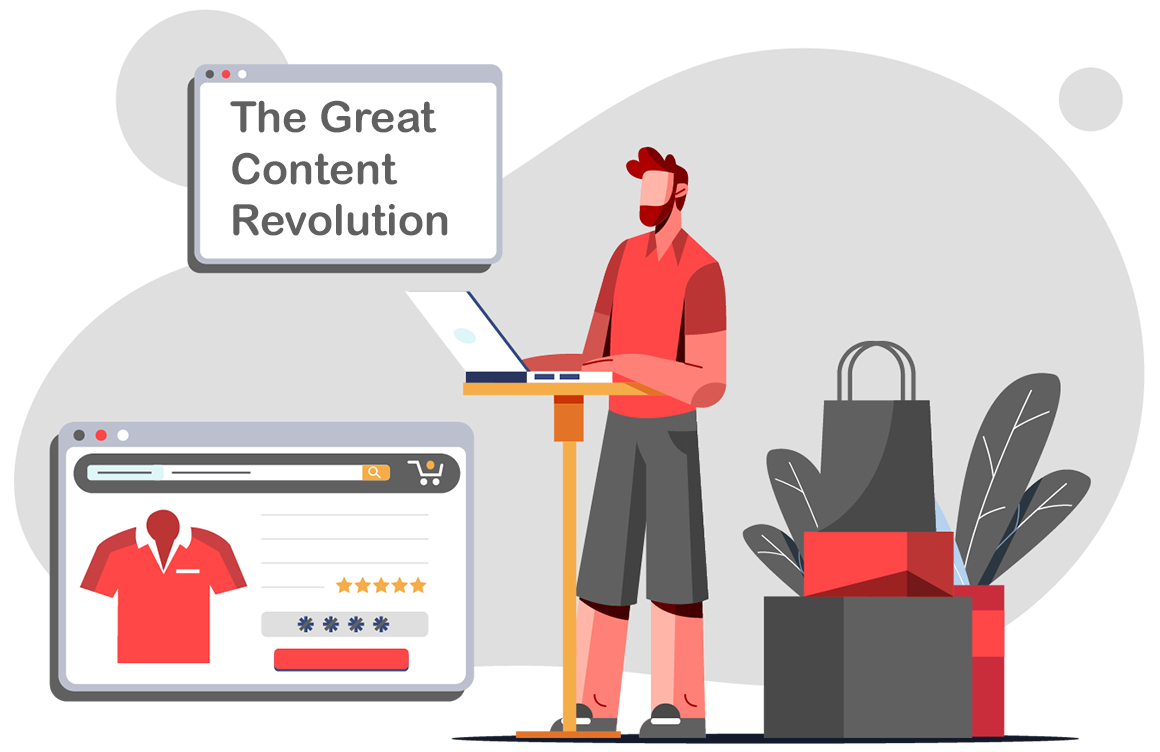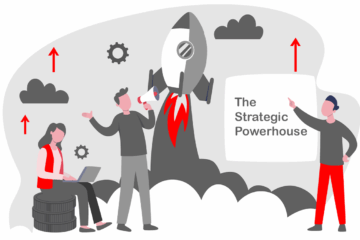How artificial intelligence is revolutionizing product description creation and leaving traditional copywriting methods in the digital dust*
The End of an Era in Ecommerce Content Creation
In the sprawling digital marketplace of 2024, a quiet revolution is reshaping how businesses approach one of their most fundamental challenges: creating compelling product descriptions at scale. For decades, ecommerce companies have wrestled with an impossible equation: the need for thousands of unique, engaging, SEO-optimized product descriptions versus the time, cost, and logistical nightmares of traditional copywriting approaches.
The numbers tell a stark story. The average mid-size ecommerce retailer manages between 1,000 to 10,000 product SKUs, each requiring detailed descriptions that serve multiple masters: search engines demanding SEO optimization, customers seeking detailed information, and conversion optimization requiring persuasive copy. Traditional approaches to this challenge have created bottlenecks that limit growth, drain budgets, and often result in inconsistent brand messaging across product catalogs.
Enter artificial intelligence—not as a supplement to human creativity, but as a complete paradigm shift that’s redefining what’s possible in content creation. The emergence of advanced AI models from OpenAI, Google, and Anthropic has created an inflection point where businesses must choose between clinging to expensive, slow traditional methods or embracing technology that delivers superior results at a fraction of the cost.
This isn’t simply about choosing between human and machine capabilities. It’s about recognizing that the game itself has fundamentally changed. The question facing ecommerce businesses today isn’t whether AI can match human writing quality—it’s whether they can afford to ignore the transformative advantages that AI brings to content creation at enterprise scale.
The Traditional Copywriting Trap: Why Manual Methods Are Failing Modern Ecommerce
For years, businesses have accepted the painful reality of manual product description creation as a necessary evil. The traditional approach follows a predictable pattern: hire copywriters, conduct extensive product research, write individual descriptions, manage revision cycles, and pray for consistency across hundreds or thousands of products. This process, while familiar, has become increasingly unsustainable in today’s competitive landscape.
The fundamental problem with manual copywriting lies not in the quality of individual pieces, but in the inherent limitations of human-scale operations. Professional copywriters, regardless of their skill level, face insurmountable challenges when confronted with bulk content requirements. A single product description can require 30 to 60 minutes of research, writing, and editing time. For a catalog of 2,000 products, this translates to 1,000 to 2,000 hours of work—approximately six months to a full year of dedicated effort from a single writer.
The scalability crisis becomes even more pronounced when businesses attempt to address volume through team expansion. Managing multiple writers introduces new complexities: inconsistent brand voice, varying quality standards, coordination overhead, and the continuous challenge of maintaining unified messaging across diverse writing styles. What should be a straightforward content creation project becomes a complex management exercise requiring significant internal resources and expertise.
Cost considerations compound these operational challenges. Professional copywriters command rates between $25 to $100+ per hour, making large-scale projects prohibitively expensive for many businesses. A 2,000-product catalog can easily cost $160,000 to $320,000 in copywriting fees alone—before accounting for project management, revisions, and quality assurance processes. These costs create artificial barriers to growth, forcing businesses to choose between comprehensive product descriptions and budget sustainability.
The AI Revolution: Redefining What’s Possible in Content Creation
Artificial intelligence has emerged as more than just an alternative to traditional copywriting—it represents a fundamental reimagining of how content creation operates at enterprise scale. Modern AI models possess capabilities that directly address every limitation of manual approaches while introducing advantages that were previously impossible to achieve.
The knowledge advantage of AI systems is perhaps their most underappreciated strength. While human writers must research each product individually, AI models have been trained on vast datasets encompassing millions of products, technical specifications, industry standards, and consumer preferences. This means that AI can instantly access comprehensive information about products across virtually any category, from complex electronics to niche industrial equipment, without the research phase that consumes so much time in traditional approaches.
This knowledge base extends beyond simple product information to include understanding of market positioning, competitive landscapes, consumer psychology, and SEO best practices. AI systems can simultaneously optimize for search engines, appeal to target demographics, and maintain brand consistency—tasks that would require multiple specialized professionals in traditional workflows.
The speed advantage of AI is equally transformative. Where human writers process descriptions sequentially, AI systems can generate hundreds or thousands of descriptions simultaneously. Individual descriptions that might take a human writer 45 minutes to research, write, and edit can be generated by AI in seconds. This isn’t simply a matter of working faster—it’s a complete elimination of the time bottleneck that has historically constrained content creation projects.
Perhaps most importantly, AI brings consistency that human teams struggle to achieve. Every description maintains the same quality standards, brand voice, formatting structure, and SEO optimization level. There’s no variation due to writer mood, experience level, or interpretation of brand guidelines. This consistency extends to technical accuracy, grammar, and adherence to style guides—elements that require constant vigilance in human-managed projects.
The Knowledge Gap: Why AI Knows Your Products Better Than Human Writers
One of the most compelling advantages of AI-generated content lies in the fundamental difference in knowledge access between artificial intelligence and human researchers. When a copywriter approaches a new product, they begin with essentially zero knowledge and must build understanding through research, manufacturer specifications, competitive analysis, and customer feedback review. This research phase often consumes more time than the actual writing process and can still result in incomplete understanding of complex products.
AI systems approach the same task with immediate access to comprehensive databases of product information, technical specifications, user manuals, customer reviews, competitive comparisons, and industry standards. This knowledge isn’t just broader—it’s deeper and more interconnected than what individual researchers can typically achieve within reasonable timeframes.
For technical products, this knowledge advantage becomes particularly pronounced. AI can instantly understand complex specifications, translate technical features into customer benefits, identify compatibility requirements, and position products within broader market contexts. A human writer working on networking equipment or industrial machinery might spend hours trying to understand basic functionality that AI comprehends immediately and accurately.
The consistency of this knowledge application across large catalogs creates additional advantages. While human writers might become experts on early products in a project but struggle with later, unfamiliar categories, AI maintains the same depth of understanding across all product types. This ensures that technical products receive the same level of detailed, accurate descriptions as simpler consumer goods.
Speed and Efficiency: The Time Revolution in Content Creation
The speed differential between AI and human content creation represents more than just efficiency gains—it fundamentally changes what’s possible in terms of project timelines and business responsiveness. Traditional content creation operates on human timescales: days for individual descriptions, weeks for small batches, months for comprehensive catalogs. AI operates on digital timescales: seconds for individual descriptions, hours for large batches, days for enterprise-scale catalogs.
This speed advantage cascades through business operations in ways that aren’t immediately obvious. Faster content creation enables more agile response to market changes, seasonal demands, and new product launches. Businesses can adjust descriptions for different markets, test multiple versions for optimization, and update content in response to customer feedback—all within timeframes that make such responsiveness practical rather than theoretical.
The elimination of human scheduling constraints provides additional operational advantages. AI systems don’t require breaks, work consistent hours regardless of time zones, and maintain peak performance throughout projects. This means that urgent projects can be completed over weekends, international projects can proceed without coordination delays, and peak seasons don’t create resource bottlenecks.
For businesses managing multiple brands, seasonal catalogs, or frequent product updates, this speed advantage becomes a competitive differentiator. The ability to launch products with complete, optimized descriptions immediately, rather than waiting weeks for copywriting completion, can significantly impact market positioning and sales velocity.
The Economics of Scale: Cost Analysis That Changes Everything
The economic implications of AI versus manual content creation become more dramatic as project scale increases. While individual description costs might seem comparable in small quantities, the scaling dynamics reveal fundamental differences in cost structure that make AI increasingly advantageous for any significant volume.
Manual copywriting follows linear cost scaling—each additional description requires proportional time and expense. A project requiring 1,000 descriptions costs roughly ten times more than a 100-description project, with no economies of scale to offset the multiplication. Project management overhead, quality assurance requirements, and coordination complexity actually increase costs disproportionately as team size grows to handle larger volumes.
AI pricing structures, in contrast, typically offer volume discounts that reward larger projects. The per-description cost decreases as quantity increases, creating genuine economies of scale that make comprehensive catalog optimization financially practical. A 10,000-description project might cost only 30-40 times more than a 100-description project, rather than the 100x multiplier that linear scaling would suggest.
The elimination of overhead costs provides additional savings that compound over time. AI projects require minimal internal resource allocation—no hiring processes, no training requirements, no management overhead, no revision cycles requiring internal review time. The total cost of ownership for AI-generated content often represents 90-95% savings compared to equivalent manual approaches.
Real-World Impact: A Case Study in Transformation
Consider the experience of a mid-size electronics retailer managing 2,000 product SKUs across multiple categories including computers, mobile devices, home audio, and gaming equipment. Facing pressure to improve search rankings and conversion rates, they evaluated both traditional copywriting and AI-generated approaches for comprehensive catalog optimization.
The traditional copywriting proposal painted a familiar picture: 2-3 months for project completion, requiring coordination between multiple specialized writers to handle different product categories. The cost structure included $40 per hour for experienced technology writers, with an estimated 4 hours per description covering research, writing, and editing phases. Total project investment approached $320,000, not including internal project management resources and quality assurance processes.
The timeline implications were equally challenging. Peak selling season was approaching in four months, making the proposed timeline uncomfortably tight with no buffer for delays or revision cycles. The prospect of managing multiple writers across different time zones and specialties added coordination complexity that threatened to extend the timeline further.
The AI-generated alternative offered a dramatically different value proposition. The same 2,000-product catalog could be completed within 1-2 weeks at a total cost under $900, representing more than 99% cost savings and 10x faster completion. The consistency advantage meant no coordination between multiple writers, no brand voice variations, and no quality fluctuation across product categories.
The business chose AI generation and experienced results that exceeded expectations. Not only were costs and timelines dramatically better than projected, but the resulting descriptions showed measurable improvements in search rankings and conversion rates compared to their existing content. The consistency of SEO optimization across all descriptions created a unified improvement in organic search performance that had been impossible to achieve with their previous piecemeal content approach.
Looking Forward: The Future of Ecommerce Content Strategy
The implications of AI-powered content generation extend beyond simple cost and time savings to fundamental changes in how businesses approach content strategy. Traditional approaches treated product descriptions as necessary expenses to be minimized. AI economics make comprehensive, detailed descriptions a practical competitive advantage rather than a budget burden.
This shift enables new strategic approaches that were previously impractical. Businesses can now afford to create multiple description variations for A/B testing, develop platform-specific optimizations for different sales channels, and maintain fresh content through regular updates and seasonal adjustments. The low cost of AI generation makes experimentation and optimization affordable rather than prohibitive.
The speed advantage also changes the relationship between content and business operations. Product launches can include complete, optimized descriptions from day one. Market expansion into new regions or demographics can include appropriately adapted content without budget constraints. Seasonal promotions and marketing campaigns can be supported with customized descriptions that enhance rather than compete with other marketing investments.
As AI technology continues to advance, these advantages will likely expand rather than diminish. Emerging capabilities in multi-language generation, image analysis integration, and real-time optimization suggest that AI content generation will become even more powerful and cost-effective over time.
Conclusion: Embracing the Inevitable Future
The comparison between AI-generated and manual product description creation reveals more than operational differences—it illuminates a fundamental shift in how successful businesses will approach content strategy in the digital age. The data is unequivocal: AI offers superior speed, consistency, knowledge access, and cost efficiency while maintaining quality standards that meet or exceed traditional approaches.
The businesses that will thrive in tomorrow’s competitive landscape are those that recognize this transition not as a choice between alternatives, but as an evolution toward clearly superior methods. The question facing ecommerce leaders isn’t whether AI can match human capabilities—it’s whether they can afford to handicap their operations with outdated approaches while competitors gain decisive advantages through technological adoption.
The numbers speak for themselves: 99% cost reduction, 10x faster completion, unlimited scalability, and consistent professional quality. These aren’t marginal improvements—they represent a complete transformation of what’s possible in content creation. In an environment where every advantage matters, the businesses that embrace AI-powered content generation will find themselves competing from a position of strength that traditional approaches simply cannot match.
The content revolution is here. The only question remaining is whether your business will lead the transformation or be left behind by it.



